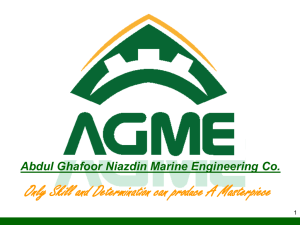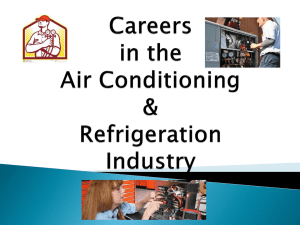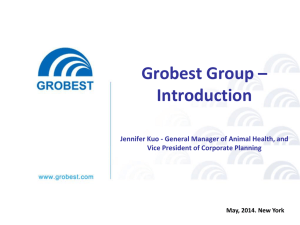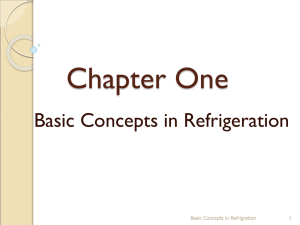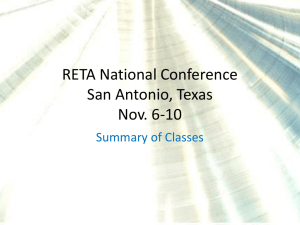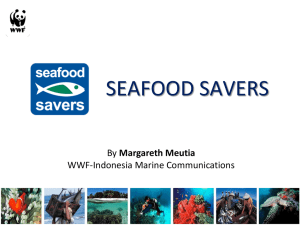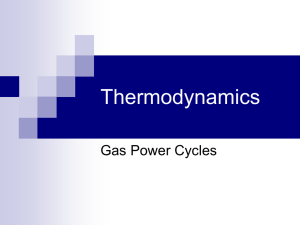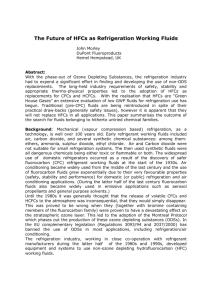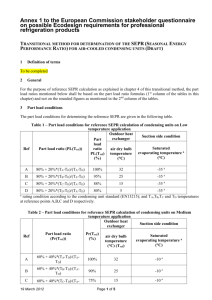21063 Manage refrigeration systems on a commercial seafood vessel
advertisement
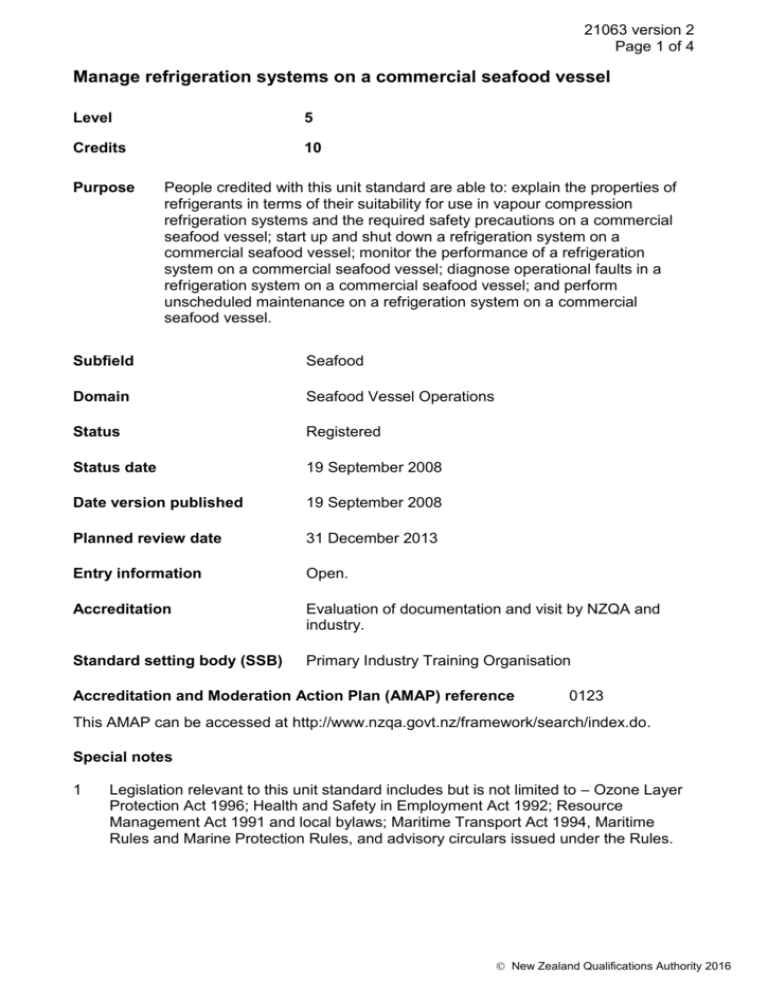
21063 version 2 Page 1 of 4 Manage refrigeration systems on a commercial seafood vessel Level 5 Credits 10 Purpose People credited with this unit standard are able to: explain the properties of refrigerants in terms of their suitability for use in vapour compression refrigeration systems and the required safety precautions on a commercial seafood vessel; start up and shut down a refrigeration system on a commercial seafood vessel; monitor the performance of a refrigeration system on a commercial seafood vessel; diagnose operational faults in a refrigeration system on a commercial seafood vessel; and perform unscheduled maintenance on a refrigeration system on a commercial seafood vessel. Subfield Seafood Domain Seafood Vessel Operations Status Registered Status date 19 September 2008 Date version published 19 September 2008 Planned review date 31 December 2013 Entry information Open. Accreditation Evaluation of documentation and visit by NZQA and industry. Standard setting body (SSB) Primary Industry Training Organisation Accreditation and Moderation Action Plan (AMAP) reference 0123 This AMAP can be accessed at http://www.nzqa.govt.nz/framework/search/index.do. Special notes 1 Legislation relevant to this unit standard includes but is not limited to – Ozone Layer Protection Act 1996; Health and Safety in Employment Act 1992; Resource Management Act 1991 and local bylaws; Maritime Transport Act 1994, Maritime Rules and Marine Protection Rules, and advisory circulars issued under the Rules. New Zealand Qualifications Authority 2016 21063 version 2 Page 2 of 4 2 Company requirements refer to instructions to staff on policy and procedures that are communicated in a verbal or written form. These requirements must include legislation requirements and company safety procedures, and may include but are not limited to, industry codes of practice and standards. 3 For the purposes of this unit standard refrigeration systems used on seafood vessels includes but are not limited to – air conditioning systems, domestic refrigerators, hold refrigeration or freezer systems, and refrigeration systems involved in seafood processing, such as refrigerated seawater, ice slurry maker/ice maker, plate freezers, refrigerated fillet skinners, brine making. 4 Manage, in this unit standard, includes the requirement to operate and maintain refrigeration systems, and diagnose and correct system faults within the requirements of New Zealand and international law, the relevant Classification Society, the charter and/or owner company, and the Master of the vessel. Elements and performance criteria Element 1 Explain the properties of refrigerants in terms of their suitability for use in vapour compression refrigeration systems and the required safety precautions on a commercial seafood vessel. Range includes but is not limited to – ammonia, Refrigerant 22 (R22) and drop in replacements. Performance criteria 1.1 The explanation includes those refrigerant properties consistent with the Ozone Layer Protection Act 1996 and the vapour compression refrigeration systems used on a seafood vessel. Range 1.2 properties – latent heat of vaporisation, specific volume, corrosive effect on metals and seals, chemical stability, flammability, toxicity, compatibility with oils, environmental impact, ease of handling, ease of leak detection. The explanation includes refrigerant properties consistent with the supplier’s Material Data Safety (MDS) information and the required safety precautions, in accordance with company requirements. Element 2 Start up and shut down a refrigeration system on a commercial seafood vessel. Performance criteria 2.1 Pre-start checks on the refrigeration system are made in accordance with manufacturer’s instructions and company requirements. New Zealand Qualifications Authority 2016 21063 version 2 Page 3 of 4 2.2 Start-up procedures for the refrigeration system are in accordance with manufacturer’s instructions and company requirements. 2.3 Pre-start checks and start-up procedures for the refrigeration system ensure that abnormal conditions within the systems are detected and rectified. 2.4 Shut-down procedures for the refrigeration system are in accordance with manufacturer’s instructions and company requirements. Element 3 Monitor the performance of a refrigeration system on a commercial seafood vessel. Performance criteria 3.1 Refrigeration system pressures and temperatures are monitored and logged in accordance with company requirements. 3.2 The performance of protecting cut-outs and emergency shut-downs are tested and verified in accordance with manufacturer’s instructions and company requirements. Element 4 Diagnose operational faults in a refrigeration system on a commercial seafood vessel. Range refrigerant leak; moisture, scale, and other contaminants in refrigerant; abnormal operating temperatures and pressures. Performance criteria 4.1 Diagnosis is consistent with fault and manufacturer’s information. 4.2 Diagnosis is undertaken safely and documented in accordance with company requirements. 4.3 Advice is sought to assist in the diagnosis of faults when these can not be identified or located, in accordance with company requirements. New Zealand Qualifications Authority 2016 21063 version 2 Page 4 of 4 Element 5 Perform unscheduled maintenance on a refrigeration system on a commercial seafood vessel. Range identify and remove oil, air, water, scale and sludge contaminants from refrigerant; seal leaks in refrigerant system; select and replenish oil and refrigerant; adjust refrigerant flow; replace system components; defrost; isolate/lock out system for maintenance. Performance criteria 5.1 Unscheduled maintenance is performed in a manner consistent with personal safety, the safety of the vessel and its crew, and the environment. 5.2 The unscheduled maintenance performed is consistent with the efficient operation of the refrigeration system, manufacturer’s instructions, and company requirements. Please note Providers must be accredited by NZQA, or an inter-institutional body with delegated authority for quality assurance, before they can report credits from assessment against unit standards or deliver courses of study leading to that assessment. Industry Training Organisations must be accredited by NZQA before they can register credits from assessment against unit standards. Accredited providers and Industry Training Organisations assessing against unit standards must engage with the moderation system that applies to those standards. Accreditation requirements and an outline of the moderation system that applies to this standard are outlined in the Accreditation and Moderation Action Plan (AMAP). The AMAP also includes useful information about special requirements for organisations wishing to develop education and training programmes, such as minimum qualifications for tutors and assessors, and special resource requirements. Comments on this unit standard Please contact the Primary Industry Training Organisation standards@primaryito.ac.nz if you wish to suggest changes to the content of this unit standard. New Zealand Qualifications Authority 2016
